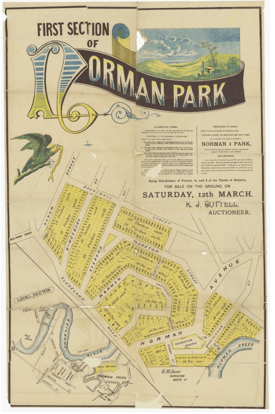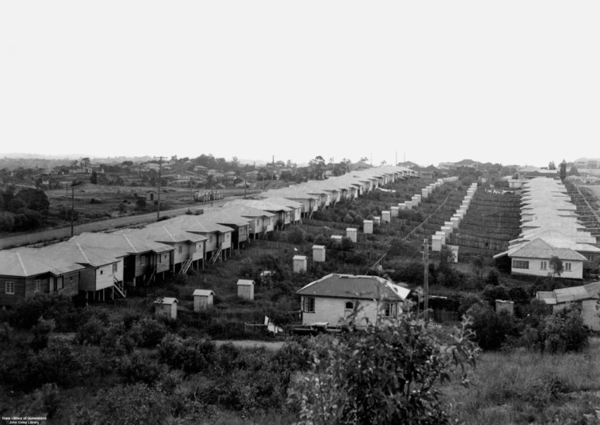The idyllic suburb of Norman Park that we know and love today was once a completely different place.
In the late 1800s, Norman Park was host to a considerable number of allotments, which were extensively advertised and publicised for sale by auction. Spread over parts of Brentnall Street, Agnew Street, Overend Street, Kingsbury Street, Moreton Street and Norman Avenue, the below real estate map shows 300 allotments to be auctioned.
Advertisements such as the below image were published in the Brisbane Courier and The Telegraph newspapers, highlighting the features of the estate.

‘Inspect! Nothing further can possibly be required, for if after an inspection you do not purchase - well, you simply don’t know your way about, and can’t appreciate a good thing when it is offered to you.’
The auction was held on site on March 12, 1887, with a chartered steamer boat, ‘Kate’, transporting around 800 people from Eagle Street to the auction site, where a free lunch awaited the attendees.
There was reported to be over one thousand people in attendance as the auction kicked off at 2pm, and The Telegraph reported on the results of the bidding.
‘The large lots on the hill were first offered, and 24 were sold for an aggregate of
£3,533 with an average of £150 each. 91 allotments scattered on various parts of the section were then sold, for a total of £2917, or an average of £32 each. The total was £6,450 for 115 allotments.
After World War ll in the early 1900s, the State Housing Commission sponsored house building by owner-occupiers in Norman Park.
A shortage in building materials and labour made development difficult, combined with an increase in post-war population, putting further strain on the nation’s housing infrastructure.
New building materials were sourced from Europe, which allowed the Queensland Housing Commission to see rapid development. Norman Park was one of many Brisbane suburbs which became populated with low-set timber houses on quarter acre blocks.
The ‘Home Purchasing Scheme’ consisted of two options, the first known as the ‘Workers’ Dwellings Scheme, where clients could obtain an 85% advance to assist them to build on their land, or the second scheme, clients could purchase the home and the land directly from the Commission. The scheme even came with over 40 house design options, however buyers were also free to construct a house of their own design.
As the scheme developed over time, pockets of Queensland suburbia consisted only of these houses, with all very similar designs. This architectural design is what we now refer to as ‘post-war’.
Source: Queensland State Library, John Oxley Library
If you're interested in learning more about Norman Park, check out our suburb profile here.

